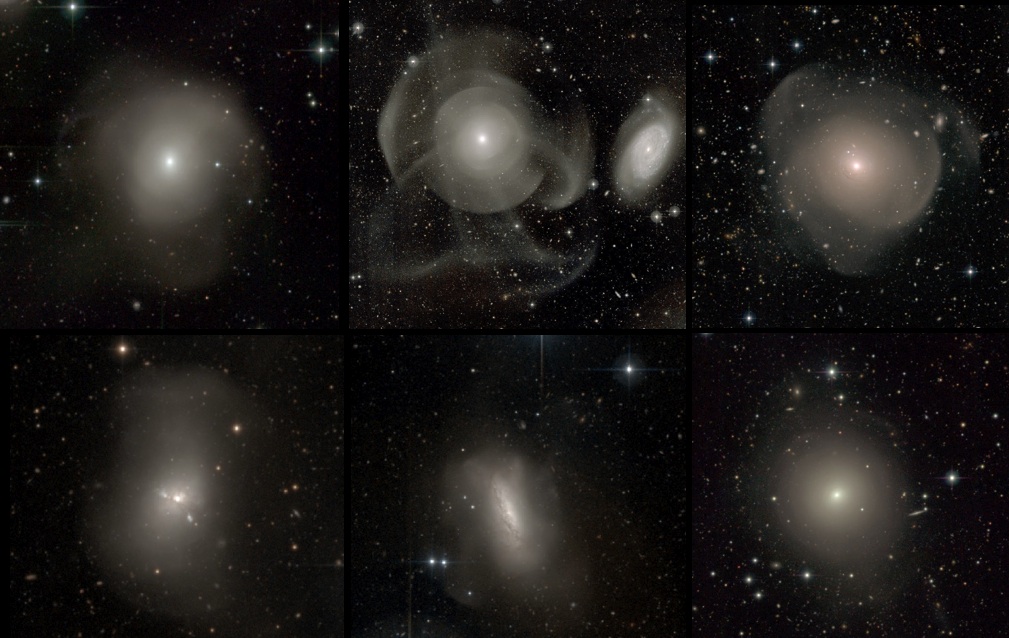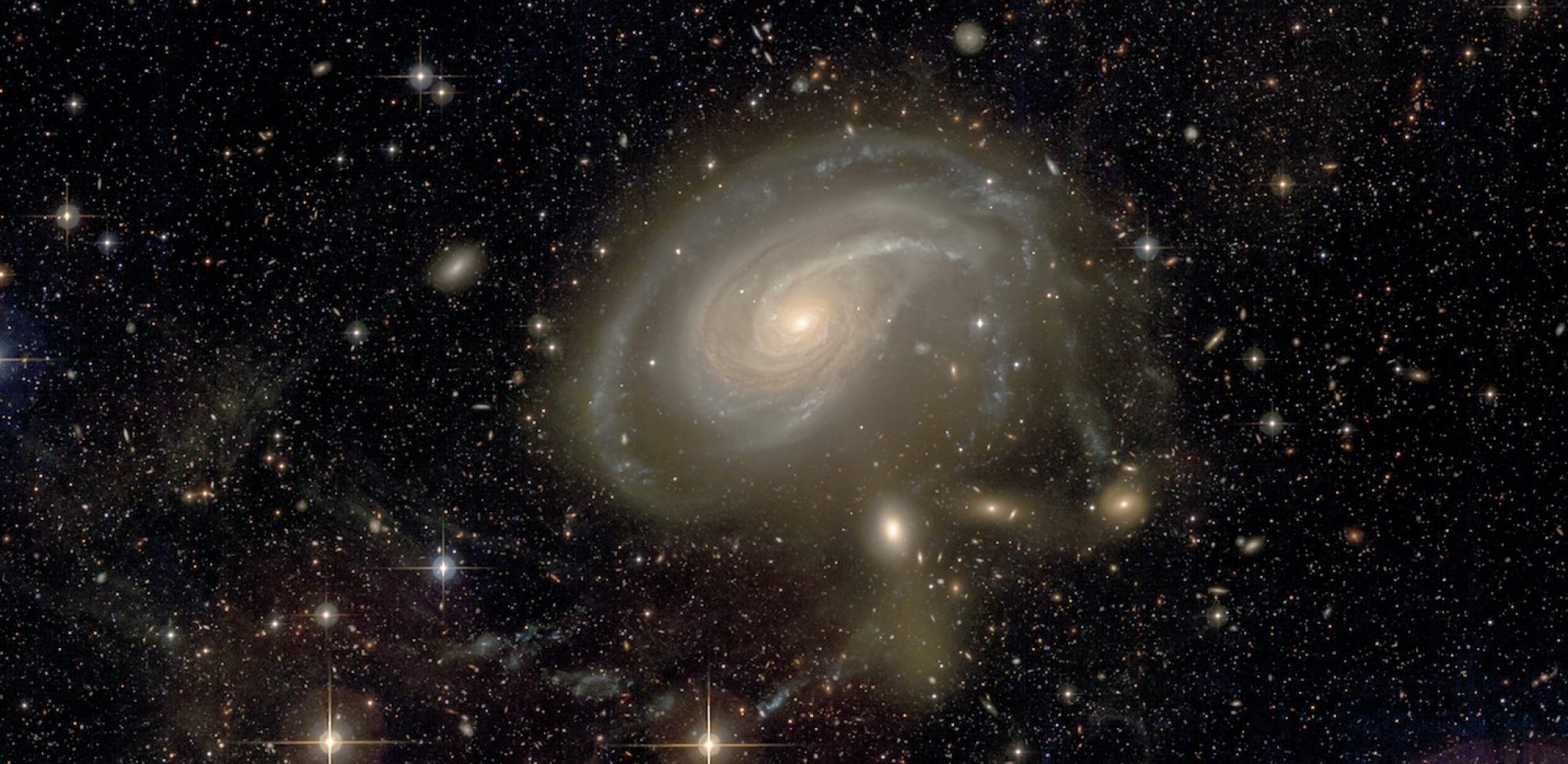Elliptical galaxies much younger than previously thought? (CFHT press release)

The standard model for elliptical galaxies formation is challenged by a new result uncovered by an international team of astronomers from the Atlas3D collaboration. Team members from CNRS, CEA, CFHT, and the Observatoire de Lyon published in the scientific journal Monthly Notices of the Royal Astronomical Society the first results from their study on two elliptical galaxies exhibiting features characteristic of a fairly recent merging, suggesting they are five times younger than commonly thought.
Continue reading “Elliptical galaxies much younger than previously thought? (CFHT press release)”The merger origin of a fast- and a slow-rotating early-type galaxy revealed with deep optical imaging

The final stages of mass assembly of present-day massive galaxies are expected to occur through the accretion of multiple satellites. Cosmological simulations thus predict a high frequency of stellar streams resulting from this mass accretion around the massive galaxies in the Local Volume. Such tidal streams are difficult to observe, especially in dense cluster environments, where they are readily destroyed. We present an investigation into the origins of a series of interlaced narrow filamentary stellar structures, loops and plumes in the vicinity of the Virgo Cluster, edge-on spiral galaxy, NGC 4216 that were previously identified by the Blackbird Telescope. Using the deeper, higher-resolution and precisely calibrated optical CFHT/MegaCam images obtained as part of the Next Generation Virgo Cluster Survey (NGVS), we confirm the previously identified features and identify a few additional structures.
Continue reading “The merger origin of a fast- and a slow-rotating early-type galaxy revealed with deep optical imaging”A Collisional Origin for the Leo Ring

Extended H I structures around galaxies are of prime importance for probing galaxy formation scenarios. The giant H I ring in the Leo group is one of the largest and most intriguing H I structures in the nearby universe. Whether it consists of primordial gas, as suggested by the apparent absence of any optical counterpart and the absence of an obvious physical connection to nearby galaxies, or of gas expelled from a galaxy in a collision is actively debated. We present deep wide field-of-view optical images of the ring region obtained with MegaCam on the CFHT.
Continue reading “A Collisional Origin for the Leo Ring”The mysterious Leo giant gas ring explained by a billion year old collision between two galaxies

An international team unveiled the origin of the giant gas ring in the Leo group of galaxies. With the Canada-France-Hawaii Telescope, the scientists were able to detect an optical signature of the ring corresponding to star forming regions. This observation rules out the primordial nature of the gas, which is of galactic origin. Thanks to numerical simulations made at CEA, a scenario for the formation of this ring has been proposed: a violent collision between two galaxies, slightly more than one billion years ago. The results will be published in the Astrophysical Journal Letters.
Continue reading “The mysterious Leo giant gas ring explained by a billion year old collision between two galaxies”

